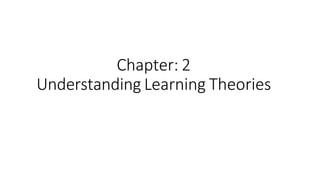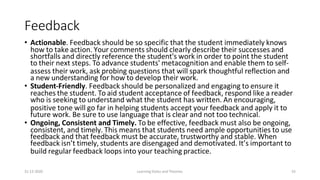This document provides an overview of learning styles and theories. It discusses various learning style models including VAK, McCarthy's 4MAT system, and Kolb's Learning Style Inventory. It also covers major learning theories such as behaviorism, cognitivism, and constructivism. Examples are given to illustrate how each theory approaches learning. The document aims to help understand different approaches to learning styles and theories.






















































